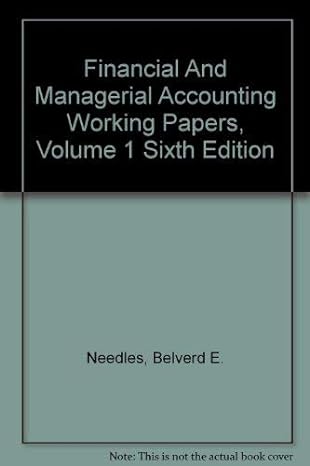Question
During its first year of operations, 2010, Fish Company: A. Issued common stock for $500. B. Purchased in cash property, plant and equipment for $200,
During its first year of operations, 2010, Fish Company:
A. Issued common stock for $500.
B. Purchased in cash property, plant and equipment for $200, with a life span of 20 years.
C. Recorded depreciation expense of $10.
D. Purchased $200 worth of inventory on account.
E. Paid off $160 on Accounts Payable.
F. Sold merchandise which cost $80 for $130 cash.
G. Sold merchandise which cost $45 for $80 collectible at a later date.
H. Collected $35 on Accounts Receivable.
I. Paid $36 in cash as rent for the first two years of operations.
J. Received a deposit, of $40, from a costumer, for a special order that will be supplied in three years. Selling price for this product is $100, and costs are estimated at $76.
K. Declares dividend $20 but paid only $10.
Question
Record the above transactions using the Accounting Equation: Assets = Liabilities + Equity.
Tip: When there is a transaction affecting retained earnings and it stems from revenues or expenses in the income statement, write down the name next to this revenue (sales, income revenues etc.) or expense (depreciation expense, rent expense, COGS etc.) so that you can easily build the income statement down the road.
Step by Step Solution
There are 3 Steps involved in it
Step: 1

Get Instant Access to Expert-Tailored Solutions
See step-by-step solutions with expert insights and AI powered tools for academic success
Step: 2

Step: 3

Ace Your Homework with AI
Get the answers you need in no time with our AI-driven, step-by-step assistance
Get Started


